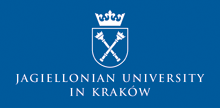Speaker
Description
Recently, the developments on digital time of flight are made for the pair of fast scintillator detectors ; BaF2-LaBr3, BaF2-BC501A, and LaBr3-BC501A using CAEN 250 mega samples per second (MSPS), model V1720, and 500 MSPS, model DT5730 digitizers [1,2]. Study reveals the improvement in the TOF resolution from 12%-17% while digitizing the signal from 250 MSPS to 500 MSPS rate. To investigate more in this area, we collected the coincidence signals from same detector pairs, irradiated by 22Na source, at 500 MSPS and 2.5 giga samples per second. Signals from each detector pair were digitized by using LeCroy HDO5000A digital oscilloscope. Different derived digitization rates ; 1.6 GSPS, 1.25 GSPS, 833 MSPS, 625 MSPS, 333 MSPS and 250 MSPS, were generated by signal down sampling method. Signal time marker from each detector pair is calculated by using Digital Constant Fraction (DCF) algorithm. Minimum TOF broadening is noted after the optimization proceedure by altering delay and fraction for each detector pair. On comparing this TOF width at different sampling rates, it is observed that this value saturates after 500 MSPS rate onwards, found true for all the pairs. The values are found to be 0.53 ns, 0.98 ns and 1 ns for the aforementioned detector pairs respectively. To explain this experimental observation, we studied the DCF Transition region (TR) distributions of LaBr3 and BC501A detectors. It reveals a constant slope of TR at different sampling rates. To furthur explain TOF width computationally, a simple pulse fitting method is adopted using Landu Distribution function. Event-by-Event fitting of the experimental pulses followed by TOF calculation explains the experimental TOF broadening for each detector pair.

